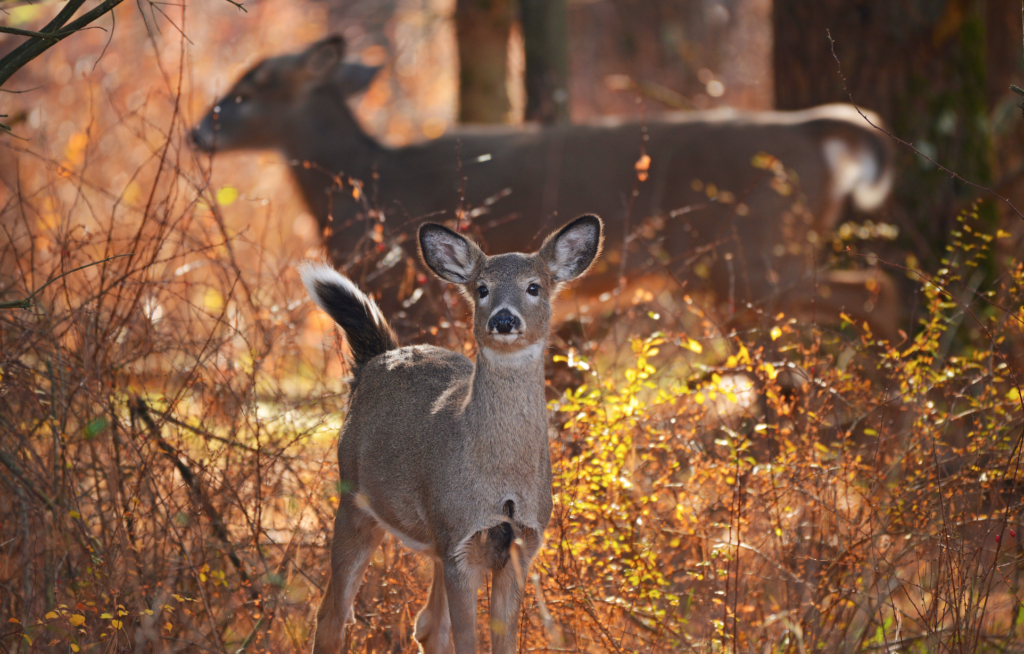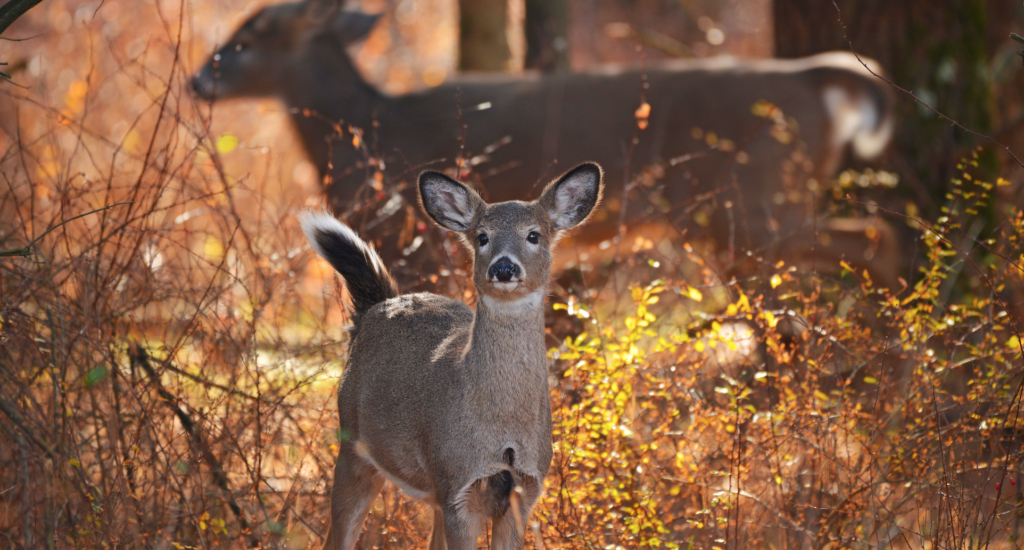While they are considered crepuscular creatures, white-tailed deer are well adapted to see well under a wide variety of light conditions, day or night.

Whitetails can detect even the slightest movement under any light intensity. (Deer & Deer Hunting photo)
Seasonally, whitetails are most active during late winter and early spring, and during the autumn breeding season, with a substantial decline in activity during summer. (Car-deer accidents follow the same pattern.) The high level of activity during spring is due to high metabolic demands, in the face of low forage quality and depletion of body fat — deer simply must spend more time foraging to meet their needs.
READ MORE: WHY DEER SEE BETTER THAN HUMANS
The decrease in deer activity during summer can be related to greatly improved nutritional conditions, and an abundance of quality food close at hand. Despite the high energy demands associated with lactation among nursing does and antler growth among bucks, forage quality and quantity tend to exceed metabolic demands (except in areas of deer over population) — during summer, deer can “fill-up” with nutritious foods while expending a minimal amount of activity.
Deer become increasingly active during late summer and early autumn, as many plants mature, become dry and hard, and decrease in nutritive value. At the same time, energy demands associated with growth, fattening and breeding activity increase. The decrease in food quality, if not quantity, means deer then must spend more time foraging to meet their metabolic requirements. Whitetails are considered to be crepuscular creatures — being most active at dawn and dusk.
READ MORE: BIZARRE CASE OF DEER WITH BULGING EYES
However, they sometimes exhibit lesser peaks of activity occurring at midday, when females are more active than males, and twice during the night. Rutting bucks might be active at any time of the day or night. Typically, deer spend midday in heavy cover, in preferred activity centers, where they bed and chew their cud, rising occasionally to shift bedding sites or browse for awhile. As darkness approaches, they become more active and head to open areas that provide better food sources, but generally are unsafe during daylight. At night they will alternately feed and bed in the open, then return to the safety of heavy cover at sunrise.
Whitetails see very well at night, and can detect even the slightest movement under any light intensity. They are well adapted for crepuscular and nocturnal behavior, because of a membrane in the back of their eye known as the tapetum lucidum. This membrane reflects light back through the receptor layer of the retina, brightening objects seen in dim light, and accounts for the eyeshine of deer when lights are shown upon them at night.
Deer can also see well in bright light, because of a ring of pigment that surrounds the cornea in the eye. This unique structure acts as an antiglare device, and is not found in other mammals that are strictly crepuscular or nocturnal.
CLICK: GET YOUR MONTHLY WHITETAIL FIX
According to noted researcher and professor Dietland Muller-Schwarze, “Day or night, a deer’s visual acuity is excellent. Under strong light, the pupils of the eye close into a slit, focusing light onto a horizontal band across the eye’s retina. In exactly this streak are clustered the nerve cells that function as signal conductors, carrying messages from the photoreceptors to the brain.
The arrangement and density of the nerve cells, called ganglion cells, in the visual streak account for the deer’s ability to detect danger from afar.” In human beings, there is no visual streak at all: The human eye focuses on just one spot at a time and cannot take in the whole horizon without movement of the eyes or head.
The visual acuity of deer is well demonstrated by an experiment known as the minimum separable. An animal is trained to distinguish stripe patterns so that the researchers can determine how fine a stripe can be seen at a certain distance before the pattern blurs — kind of like a doctor’s eye chart. According to this test, deer have a visual resolution similar to that of most other hoofed animals. Humans have a visual resolution about 12 times better than that of deer. Deer apparently have the proper photoreceptors, namely rods and cones, for color detection — although not all studies agree.
Some experiments indicate that deer can discriminate colors, under laboratory conditions at least, but not all studies agree that deer can distinguish colors in their natural environment. At best, deer probably rely upon their perception of only yellow and blue, and are less sensitive to orange and red. Some researchers conclude that deer may not need to distinguish colors in their natural environment, even though they can do so in highly controlled laboratory experiments.
Certainly, the whitetail is well-adapted to seeing under a variety of light conditions, day or night. They also have an especially wide field of vision: 310 degrees. This lets them see across a wide area and focus on the horizon, where predators might appear — all without turning their head.
— John Ozoga has been D&DH’s top research contributor since 1994. He is a retired deer research biologist who spent more than 30 years with the Michigan Department of Natural Resources.
[embedded content]

